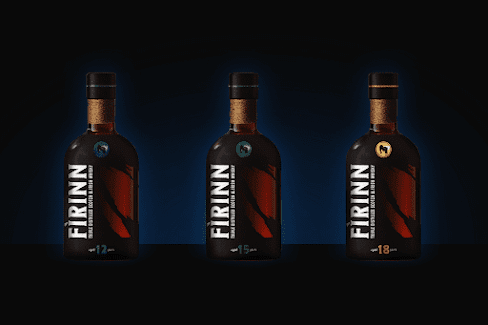Emotional Branding Speaks to Consumer’s Hearts: The Case of Food and Drinks Brands.
Food and drink brands have struggled to distinguish themselves from increasingly apathetic consumers in a highly competitive market. To address this problem, these brands have employed emotional branding to engage and make relationships with their customers.
Although the brand technicalities like product features and factors may be unmemorable, personal feelings and experiences shape the consumer’s evaluation of the brand. We are a trusted food branding agency in London to help you claim untapped market positions.
Only a personalized-based and insight-based marketing approach can form a strong bond with the brand that invokes customers' personal and emotional reactions. This post will showcase why emotional branding is essential, especially for food and drinks brands in a highly competitive and volatile market.
What is Emotional Branding?
Emotional branding is the strategy wherein the brand promotes and invokes customer emotions to create a relationship between the brand and the consumers.
Brands here focus on single emotions such as joy, anger, and sadness to get a response from the customers. If you are looking for a high-concept commercial video to disrupt the market, visit a brand video production and strategy company in the UK.
In a nutshell, emotional branding is about provoking the customers' emotions to connect with them on a personal level so that they notice, remember, and share your products and services. The payoff can be huge when companies connect with the customer's emotions.
Here Are Some of The Benefits of Emotional Branding.
1. Creates a strong connection
Humans are emotional beings, and it reflects in our daily lives. You can influence their daily decisions by invoking emotions and creating a deep connection with them.
2. Helps stand out from competitors
Many brands focus on offering multiple features and competitive pricing, but often lack a human touch. However, they can humanize the approach by including real people in your campaign. This way, you can stand out and differentiate your brand from competitors.
3. Positive reputation
A well-reputed company shows that you are a serious company that cares about other businesses and treats them respectfully. You will discover that your brand's reputation is improving by doing correct emotional branding.
4. Create a unique identity
If your business is like any other, you won't be able to create an emotional connection with the audience. The key benefit of the emotional brand is that it helps your brand stand out from the crowd and makes it unique.
5. Increased ROI
Although the return on investment, or ROI, is not directly related to emotional branding. But all the benefits of an emotional brand contribute to an increase in the ROI.
Now that you know the benefits of employing emotional branding, let's look at how to create an emotional branding strategy!
How to Create an Emotional Branding Strategy
1. Know your audience
Knowing your audience is the first and foremost step in marketing to the audience. So, before you jump into making marketing strategies, you should research your audience and their needs.
Find out who you intend to market your products to and what reactions you want from them. Targeting one emotion can help you get the best response from them, which can also benefit your brand.
2. Bring out your human side
The next thing after you knows your audience is to find out if your audience knows you.To your audience, you are just another business among thousands of other businesses. So, it is when emotional branding helps you bring out the human side of your business. You need to create something that talks about people and enthusiasm toward customer needs and wants.
Listen to your customers, understand their issues and problems, then you can connect on emotional levels. All these activities will help your brand become the customer's first choice.
3. Tell authentic stories
When you tell an authentic story, it can resonate with the audience. Your audience can easily spot the fake brand story if the story is not real. Although being an authentic brand storyteller takes time and effort, the best brand storytellers ensure the brand and its customer experiences are aligned with the storytelling. It means your brand story resonates with them as it matches their experience with the brand.
You should be passionate while telling brand stories and always ensure that these stories are relatable and empathize with your customers. Share real stories as to how your brand helped the customers. It builds trust and loyalty toward your brand.
4. Custom messaging
No one likes receiving auto-generated messages, which can sometimes be annoying. That is why it is essential to create an emotional connection with your audience through personalization and customization.
Customize your message for your potential customers based on whatever information you have about them. For example, it could be based on past purchases, birthdays and favourite products, and other demographics like name, age, gender, etc.
5. Use the right language
While it is important to focus on brand values and emotions to connect with your audience, it is also important to focus on what you convey.
To create an emotional connection, you need to use appropriate language. Ensure you are using attractive words and phrases to capture the attention of your target audience.
You can also employ visual elements like emojis, Gifs, stickers, and memes to attract different audiences.
Conclusion
Emotional branding can effectively boost your brand story and take it to the next level. Find a unique way of communicating with your customers so that you can provide extra value to your brand and products. Ventur Agency is a reliable brand strategy company in the UK that helps you get more trust, more loyalty, and more revenue.







Comments
Post a Comment